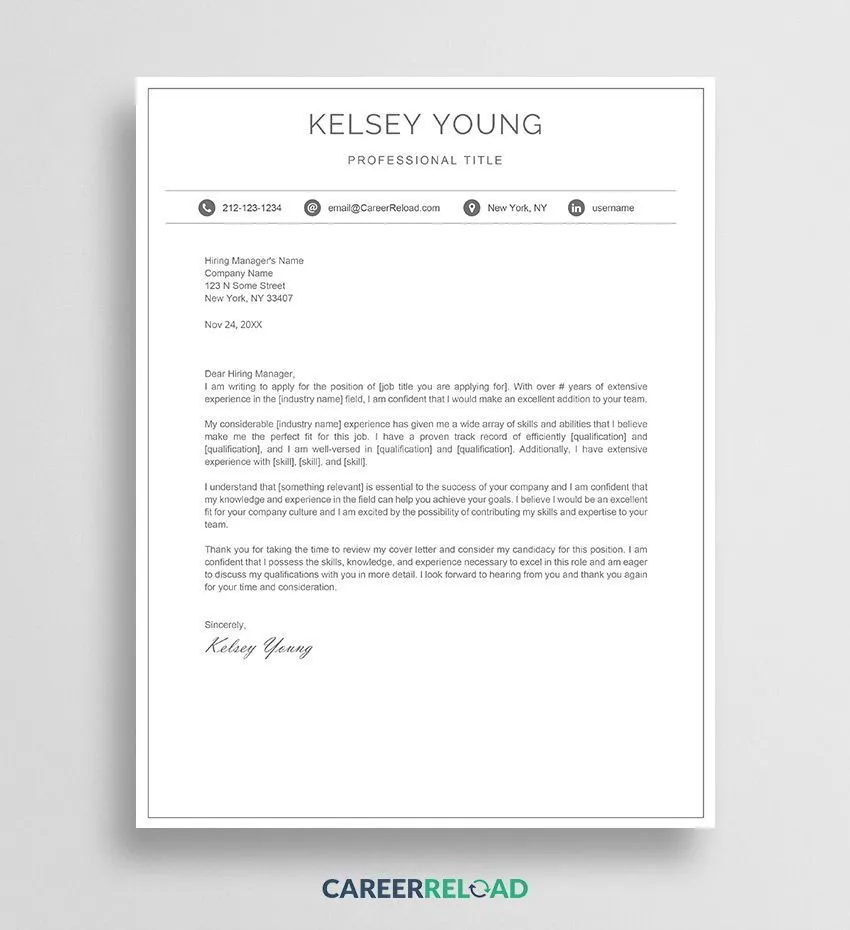In today’s competitive job market, a well-crafted cover letter is more than just a formality; it’s your first impression. It’s your opportunity to introduce yourself, express genuine interest in the role, and showcase your unique value proposition. This guide provides a comprehensive basic cover letter outline to help you create a compelling cover letter that grabs the attention of hiring managers and increases your chances of landing an interview. Whether you’re a recent graduate, a seasoned professional, or someone looking to switch careers, the ability to write a persuasive cover letter is a critical skill in the job-seeking process. A strong cover letter complements your resume, providing context, personality, and a narrative that helps employers understand why you’re the perfect fit for the position. Learning how to structure and write a standout cover letter is an investment in your future.
Why a Cover Letter Matters
While a resume provides a snapshot of your skills and experience, a cover letter allows you to tell your story. It offers a chance to demonstrate your personality, express your enthusiasm for the role and the company, and highlight specific achievements relevant to the job description. Many hiring managers use cover letters to assess your communication skills, attention to detail, and overall fit within the company culture. A well-written cover letter demonstrates your commitment to the role and provides context for your qualifications, helping you stand out from other applicants. In some cases, a cover letter can even compensate for gaps in your resume or address specific concerns an employer might have. A cover letter shows that you have taken the time and effort to research the company and the position and that you are genuinely interested in the opportunity. In the digital age, where applications are often processed by automated systems, a cover letter can still provide a human touch.
Key Components of a Cover Letter
A basic cover letter outline generally includes the following key components; a professional header, a compelling opening paragraph, a section highlighting relevant skills and experience, a paragraph that describes how your skills match the job description, a section to express gratitude, and a clear call to action. Each of these sections plays a crucial role in conveying your value and convincing the hiring manager to read your resume and consider you for the role. Mastering the structure of each component will give you a significant advantage in the application process. The organization of a cover letter allows you to present your qualifications in a logical and compelling manner. This structure not only makes it easier for the reader to understand your qualifications, but it also allows you to emphasize the aspects of your experience that are most relevant to the job requirements. A well-organized letter demonstrates your ability to communicate effectively, which is a critical skill in almost every profession. The key is to present your strengths in a concise, easy-to-read format, ensuring that your message is both persuasive and memorable.
Contact Information (Your and Recipient)
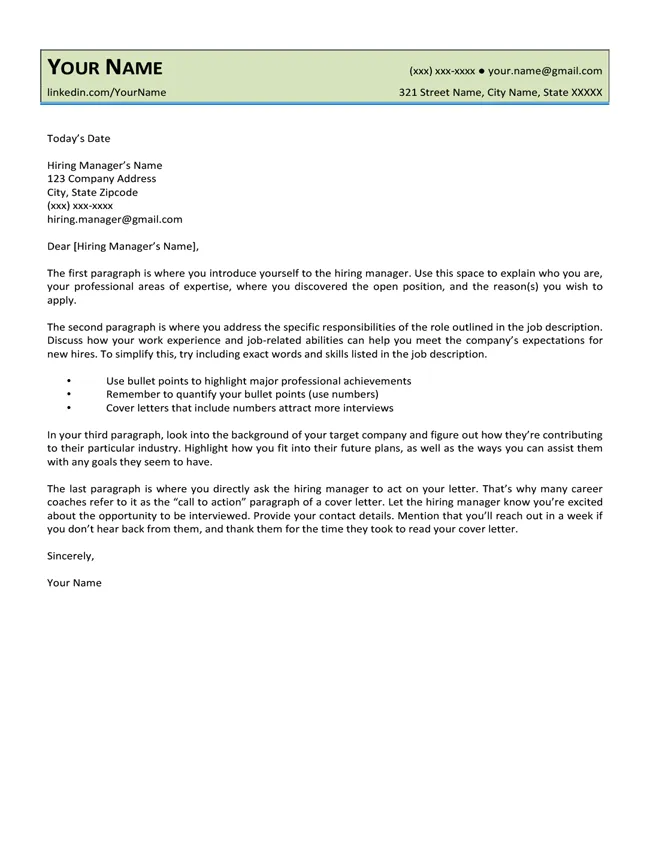
Start your cover letter with your contact information, including your name, phone number, email address, and optionally, your LinkedIn profile URL. This information should be at the top of your letter, usually left-aligned. Underneath your information, include the recipient’s contact details, if available; their name, title, company name, and address. If you don’t have a specific name, use the hiring manager’s title or the department name. If you are applying online, consider the best format for readability. Make sure your contact information is clear and easy to read, using a professional font and formatting. When addressing the recipient, use a formal greeting such as ‘Dear Mr./Ms./Mx. [Last Name]’ if you know the name. Using a name when possible adds a personal touch. Avoid using casual greetings such as ‘Hi’ or ‘Hello’, and always double-check the spelling of the recipient’s name and company. Using a professional email address is also crucial, as it demonstrates your attention to detail and commitment to presenting yourself in the best possible light. Accuracy and professionalism in this section set the tone for the rest of your letter and demonstrate your respect for the recipient and the opportunity.
Professional Header Formatting
The header is the visual first impression of your cover letter, so it is vital to make sure it looks professional and is correctly formatted. Your contact information should be at the top of the document. Typically, this is where you put your name, address, phone number, and email address. A well-formatted header provides clear identification and allows employers to quickly find your contact information. When creating your header, use a professional font such as Times New Roman, Arial, or Calibri, and choose a font size that is easy to read (usually 10-12 points). Ensure the text is aligned consistently, either left-aligned or right-aligned, depending on your preference, but be consistent throughout the document. Check for any formatting issues like extra spaces, inconsistent spacing, or any misalignment. Maintaining a clean and organized header improves the readability of your letter. In many cases, cover letters are printed; therefore, ensure that the header looks equally good whether it’s viewed digitally or on paper. This attention to detail shows that you care about your appearance, which can make a difference when applying for a role.
The Opening Paragraph Hook
The opening paragraph is your chance to grab the reader’s attention and make them want to read more. Start with a strong opening that immediately states the position you’re applying for and where you found it. For example, ‘I am writing to express my keen interest in the Marketing Manager position advertised on LinkedIn.’ Express enthusiasm and make your tone optimistic and engaging. Avoid generic openings such as ‘I am writing to apply for the position of…’ Instead, try to capture your audience’s attention with a brief summary of why you’re interested. Briefly mention something that makes you uniquely suited for the role. You can use the opening to share something that immediately demonstrates your suitability or highlights a relevant achievement. This immediate connection to the job is crucial. The goal of your opening is to make the hiring manager want to learn more about you. Be concise and direct, keeping the opening paragraph to no more than 3-4 sentences. The opening paragraph sets the tone for the rest of the letter, so make it engaging, specific, and tailored to the job.
Expressing Enthusiasm and Interest
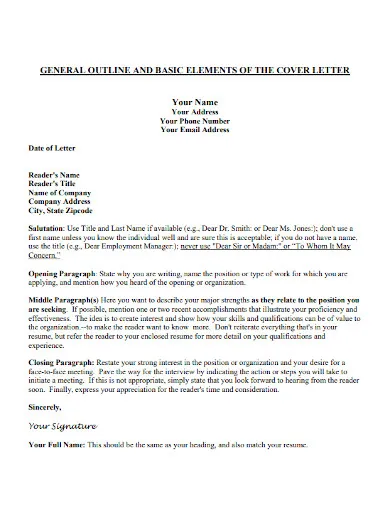
Expressing genuine enthusiasm and interest is key to making a positive impression. Your cover letter should clearly state your enthusiasm for the role and the company. This is your opportunity to show that you’ve done your research and understand the company’s mission, values, and recent achievements. Instead of merely stating that you are interested, provide specific reasons for your interest. Mention the projects or initiatives the company is involved in or the company culture that attracts you. Demonstrate your genuine interest by referencing specific aspects of the job description and explaining how your skills and experience align with those requirements. Showing that you are genuinely excited about the opportunity makes a big difference. Your enthusiasm should be reflected in your tone, and be enthusiastic without being overly effusive. Always express your interest in a professional and articulate manner. This section is an opportunity to align your personal and professional goals with the job and the company. Make sure your enthusiasm feels authentic and is not just a formality.
Highlighting Relevant Skills and Experience
In the body of your cover letter, highlight the most relevant skills and experience. Align them with the job description to show how you meet the requirements. Start by identifying key skills and experiences listed in the job description and then provide examples of how you’ve used them. Give concrete examples that demonstrate your ability to excel in the role. Instead of just listing your skills, provide context and details. Use the STAR method (Situation, Task, Action, Result) to describe specific situations and the actions you took to achieve positive results. Quantify your achievements whenever possible. Use numbers and data to illustrate your impact, such as the percentage of increase in sales or the number of projects completed. Focus on the accomplishments that directly relate to the job requirements. Tailor your letter to match each specific job application. Your cover letter is your chance to demonstrate your ability to perform the job. A well-written cover letter gives the hiring manager proof that you can do the job and deliver results.
Tailoring to the Job Description
One of the most important steps is to tailor your cover letter to each job description. Avoid using a generic cover letter; customization is essential. Start by carefully reading the job description to identify the key requirements and keywords. Then, structure your cover letter to address these requirements directly. Use the same keywords and phrases from the job description to demonstrate that you meet the criteria. Highlight how your skills and experience align with these specific requirements. Provide specific examples of how you have demonstrated these skills in past roles. Consider the company’s values and culture and how you align with these. Tailor your tone and style to fit the company’s brand. Personalize your letter to the specific role and company. Doing this shows that you have taken the time to understand the role and are genuinely interested in the opportunity. This customization significantly increases your chances of getting noticed and being called in for an interview. This ensures that your application is not just a general statement but a direct response to the hiring manager’s needs.
Quantifying Achievements
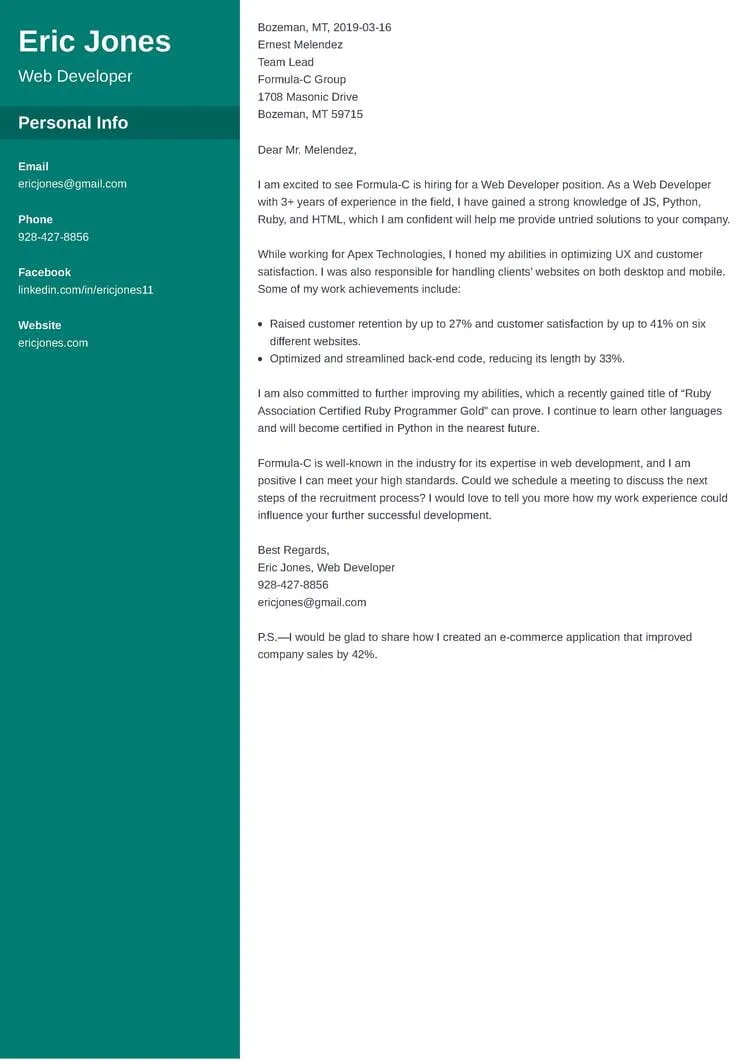
Quantifying your achievements is a powerful way to make a lasting impression on the hiring manager. Provide concrete examples of your accomplishments and use numbers and data to illustrate your impact. When describing your experience, use metrics to showcase your results, such as increased sales, reduced costs, or improved efficiency. For example, instead of saying ‘Improved customer satisfaction,’ you could say ‘Increased customer satisfaction scores by 15% through improved customer service initiatives.’ Use percentages, numbers, and statistics to provide a clear picture of your contributions. Always be specific. Use data to show exactly how you contributed to the company’s success in past roles. This will demonstrate your ability to achieve results and your value to the company. Quantifying achievements makes your claims more credible and provides tangible evidence of your skills and expertise. It allows the hiring manager to understand the impact of your work. Make sure that the numbers and metrics align with the requirements outlined in the job description.
Showcasing Your Personality and Fit
A cover letter is an opportunity to showcase your personality and demonstrate how well you fit the company culture. While maintaining professionalism, let your unique personality shine through. Use your cover letter to reflect your personality, your enthusiasm, and the way you think and work. Share insights into your work style, values, and how you collaborate with others. Briefly mention any hobbies, interests, or experiences that show you’re a well-rounded individual. Be authentic and genuine. Your aim is to show that you are not only qualified but also a person who will fit well within the team. Research the company’s culture and values. Tailor your cover letter to reflect those values. A well-written cover letter will reveal who you are as a person and why you are uniquely suited for the role and the company’s culture. Make sure you remain professional, appropriate, and avoid any language that is inappropriate.
The Closing Paragraph (Call to Action)
The closing paragraph should leave the reader with a clear call to action. Summarize your interest in the role and briefly reiterate why you’re a strong fit. Clearly state your desire for an interview. State that you are available to discuss your qualifications further and provide your contact information. Make sure that the closing is professional and optimistic. End your cover letter by thanking the hiring manager for their time and consideration. Avoid generic phrases. Instead, personalize the closing statement. Thank the hiring manager and express your enthusiasm. The goal is to leave a positive lasting impression and encourage the hiring manager to take the next step in the process. Proofread to ensure that there are no errors in this section.
Expressing Gratitude and Next Steps
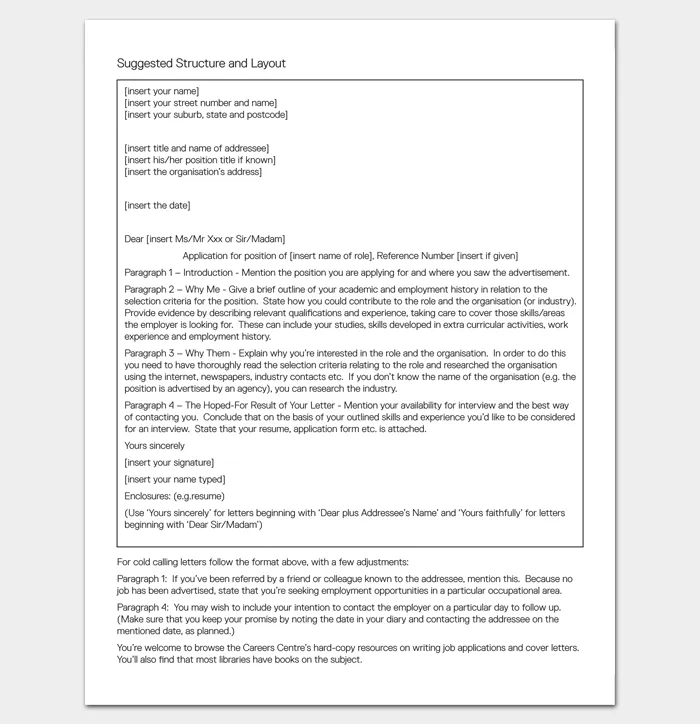
Always end your cover letter by expressing your gratitude to the hiring manager for considering your application. Thank them for their time and attention. Reiterate your interest in the position and your eagerness to discuss your qualifications further. Use a professional closing phrase such as ‘Sincerely’, ‘Best regards’, or ‘Thank you for your consideration.’ Following your closing, include your full name. Before submitting your cover letter, be sure to proofread your letter for any errors and ensure your contact information is accurate. This demonstrates your professionalism and attention to detail. Be sure you include an invitation for an interview. Expressing gratitude and a clear call to action ensures a professional and positive close to your letter. It reinforces your enthusiasm and increases the likelihood of receiving a positive response.
Formatting and Proofreading
Formatting and proofreading are critical steps in the cover letter writing process. Ensure your cover letter is well-formatted, easy to read, and free of any errors. Use a professional font, such as Times New Roman, Arial, or Calibri, in a size that is easy to read (10-12 points). Use a clean, uncluttered layout with appropriate spacing between paragraphs. Be sure to maintain consistency with font styles and sizes throughout the document. Proofread your cover letter carefully for any errors in grammar, spelling, and punctuation. Ask someone else to review your letter for you to catch any mistakes you might have missed. Make sure your cover letter matches the style of your resume. Proper formatting and proofreading make your letter look polished. This helps convey your attention to detail and professionalism. A well-formatted and error-free cover letter will make a great first impression and increase your chances of getting an interview.
Ensuring a Polished Document
Before submitting your cover letter, ensure that it is a polished document. This includes proofreading, formatting, and ensuring that it is customized to the job. Start by proofreading your cover letter for any grammatical errors, spelling mistakes, and punctuation errors. Use spell check and grammar check tools, but don’t rely on them entirely. Have someone else review your letter as a fresh pair of eyes can catch any mistakes you may have missed. Make sure that the formatting is consistent throughout the document. Choose a professional font and maintain consistency with font sizes and spacing. Tailor your cover letter to each specific job description. Be sure that you’ve mentioned the skills, experiences, and accomplishments that are listed in the job requirements. Ensure that you have addressed the hiring manager by name, if possible. Review your cover letter to ensure it represents you in the best possible light. This attention to detail shows you care about your application and the role. A polished cover letter reflects well on your professionalism, attention to detail, and commitment to the role.
Cover Letter Examples for Various Industries
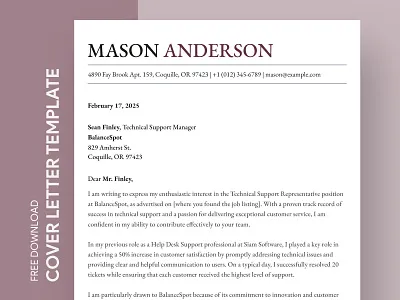
Review cover letter examples tailored to various industries. These examples can provide guidance on how to adapt your cover letter for different roles and sectors. Search online for examples that align with the industry and role you are applying for. Pay attention to the format, language, and tone used in these examples. Adapt the examples to fit your unique skills and experience. Use these cover letter examples as a template to customize and create your cover letter. Be sure to replace the examples of skills, experiences, and achievements with your own. Reviewing these cover letter examples will give you insight into the format of the cover letters, but be sure to personalize your cover letter. This personalized approach will give you an advantage. Always ensure that your cover letter is tailored to the specific job requirements. Using industry-specific cover letter examples will help make your cover letter stand out. Your cover letter will have a better chance of conveying your strengths to the hiring manager.
